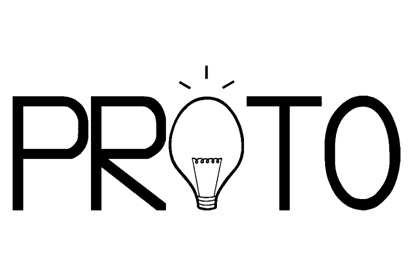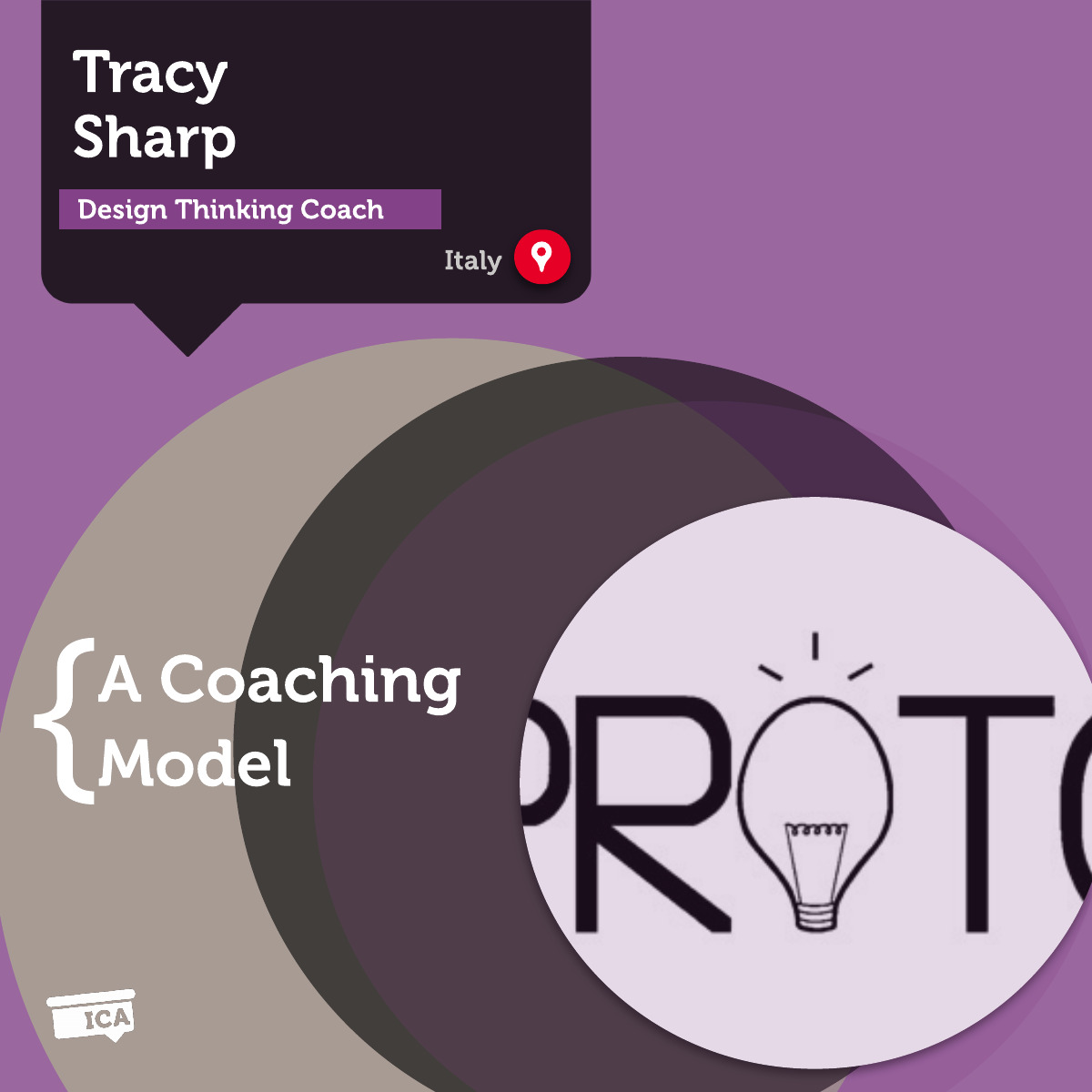A Coaching Model By Tracy Sharp, Design Thinking Coach, ITALY
PROTO Design Principles
When I considered how to create my own coaching model, I considered my background in engineering and design principles. When designing a product, you must realize that the first idea you have is not always the final product. In fact, the key to moving forward is to try ideas that have been formed with background information and facts and to learn from trying. I want to use this mindset in my coaching, so I devised the PROTO model.
The Cambridge Dictionary defines a prototype as
The first example of something, such as a machine or other industrial product from which all later forms are developed.
PROTO Model

Ponder
The first couple of sessions can be used for the client to ponder and to really understand deeply the problem they are currently facing or the future they would like to create
- “What is the gap between where you are and where you want to be”
- “What lights you up?”
- “What does the world need?”
- “What do you daydream about?”
Realization
The realization stage would be to delve further into why the client is having the problem – if there are any underlying beliefs, fears, or roadblocks and really help the client to fully realize their vision.
Various techniques can be used here to fully assess the client’s limiting belief and their origin. But the pathway to the next section of the model will be by helping to release the client from these blocks, allowing ideas to flow.
- “How is this limiting belief serving you?”
- “If this block was removed, what could be your next step”
Originate
This is the fun piece of the process; where the client now understands their problem or vision and what had previously been standing in their way.
At this point, design principles could be used again in a mind map to brainstorm possible solutions or steps for the client to move forward towards their goal.
- “What is within your control that could take you closer to your goal?”
- “What do you need to learn”
- “Where do you need to be”
- “What could this outcome feel like?”
Try
With every prototype, there must be a moment to try it and see how it performs. To do this though, there must be a clear understanding of the boundaries of success and failure so the outcome can be evaluated.
At this point, it is important to raise awareness of what success is and could be.
- “How will you know you have been successful in this area?”
- “What are your success criteria for this?”
- “How will we know when we have arrived?”
- “How long will you need before you can know the test has been completed?”
It is also important to ensure that the client is well supported to execute their solutions. This would require an understanding of their resources on hand and most importantly, their accountability.
- “Who can support you during this time”
- “What structures can you leverage to maximize the success of your prototype?”
- “How will you hold yourself accountable to test your prototype”
At this point, there would need to be a break in coaching whilst the client tests their prototypes and evaluates the success, a follow-up meeting for the next phase would be set using the time frame given by the client.
Following the break, there would be;
Outcome
The important point at this phase is for the client to review and recognize what happened after trying the prototype.
- “What happened when you tried?”
- “What did you learn about yourself?”
- “What did you learn about the situation”
- “How did the prototype meet your success expectations”
- “What would you want to adjust to improve the solution”
- “What can you do with this new awareness to move forward to your goal?”
At this point using design principles, the key aspect is to learn as much as possible from the trying phase and to return to the originating phase. With understanding the successes and what was learned, it is possible to re-evaluate and fine-tune the solution or vision and run the Realisation-Originate-Try and Outcome section of the model again, until the outcome success level has been met by the client.
At every point, there will be something to be learned and readjusted as time moves forward, and given that the solution is regarded as a prototype, there can be a release of tension that the solution does not have to be final and there is already permission given to the client that there can be changes of heart and adjustments with new information gained. As time continues, the client’s self-awareness from previous iterations will continue to grow to provide fresh perspectives each time.
I tried this with a peer coach, who was trying to find balance in her diet. She was apprehensive about the Christmas period and how this would impact her daily habits. Through the coaching, she mentioned that she wanted to track her diet to be fun, and through exploring her nerdy fun habits (Microsoft excel) she got very excited about building a tracker spreadsheet that also tracked what she ate when but also how she felt afterward.
When I shared the concept of PROTO and instilled the possibility of the tracker being a ‘trial’ period to learn only, she was engaged.
We reconnected some weeks later and in fact, this tracker had failed as it was costing her too much mental anxiety during the period. But, given that this was regarded as a trial, she immediately restarted the trial in January and by our session, had been working well.
The PROTO principle had given her the opportunity to fail and restart again without anxiety, whilst also having key takeaways and understanding more about the parameters needed for her success to track.
She has since gone further with the principle and gave herself a set period on another diet-led initiative that she will be prototyping.
Learn How to Create Your Own Coaching Model
Your Coaching Model reflects your values,
philosophies and beliefs and must communicate who you will coach
and the problems you will solve. Read more about creating your coaching model
